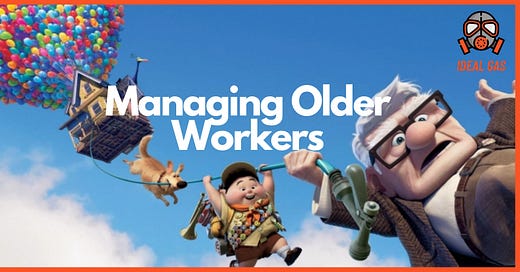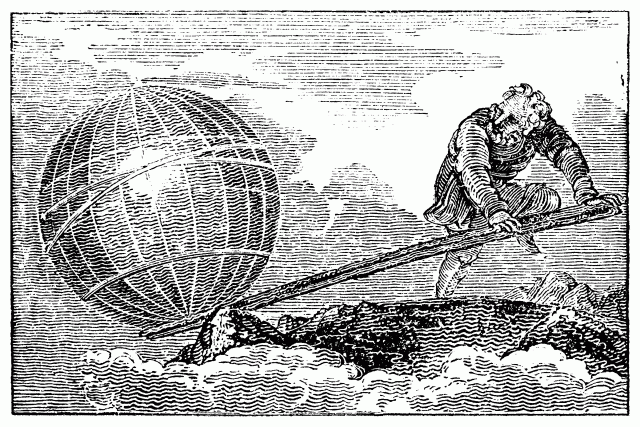Ok boomer
The modern workplace is more multigenerational than it ever has been. This is pretty much expected given the ageing population, increased human lifespan and people's decision to work longer - either by choice or necessity. Even amidst today's value for 'diversity', it is one thing to attract older employees and entirely another to get them to truly feel part of the community. Turns out the biggest obstacle to making this work lies in the fear of conflict that arises when younger employees have to supervise more experienced ones. So today we thought it would be worth exploring the dynamics of teams with significant age diversity - to understand the case for older workers and appreciate the fact that there are more similarities than differences across different generations.
Enter the remix
Let's start with the environment. How should we think about repurposing the workplace? Perhaps the answer lies in understanding what each generation wants. Turns out older workers mostly want the same things as their younger counterparts. Research shows that fundamentals such as meaning, purpose, personal growth, community, good leadership etc., don't really change. What's different is the way each generation expresses those needs and their expectations of how those needs are fulfilled by their team / organisation. For example, millennials want the exact same things that other generations have always wanted but are now over the 'stickiness' of asking for them very early in their careers. They are just more comfortable moving on to jobs that actually provide these. It is very important that companies understand this before they start using big words like 'culture transformation' or 're-organisation' or even 'change' to hurt people's feelings.
“Some remixes take the original to the next level, and sometimes the remix becomes more popular than the original song”
The 'remix' is a friendlier approach to organisational change as proposed by Lindsey Pollak in her book 'The Remix'. It involves identifying things that don’t change rather than focusing on the newest generational trends to latch on to. To remix the workplace is to take practices and habits embraced by older generations and add or modify them to appeal to the younger generations. This blends the best of each generation and creates a workplace that is organically inclusive. Managers can start with these simple steps to better engage the older employee
Link work activities to meaningful outcomes - especially social outcomes
Provide opportunities for greater social impact
Acknowledge the team member's expertise
Engage in proactive feedback without rushing to judgement / solutions
Provide flexibility and autonomy
Leverage and the case for older workers
Managerial leverage in simple terms is the measure of the output generated from any given activity and it comes from doing work that does more work. Borrowing from Andy Grove, a manager's output can be linked to their activity as follows: Managerial output = L1 x A1 + L2 x A2 + …., which means that for every activity A1, A2 etc., that the manager performs, the output of the organisation must improve by a certain amount. That amount is determined by the leverage L1, L2 etc., of each of those activities. Following this, a manager's output can be increased in the following three ways: speeding up work to increase the rate at which individual activities are performed, increasing the leverage of individual activities or by shifting the activity mix towards high leverage activities. Now, leverage can be achieved in the following ways:
When more people are affected by the given activity
When a person's behaviour over a long term is affected by the said activity (eg: performance reviews)
When the work of a larger group is affected by the supply of knowledge / information by the individual
This builds the strongest case for older workers in multigenerational teams with younger supervisors. While the younger manager might be able to increase leverage through (1) and (2), research has shown time and again that the older worker is the better 'know-how' manager who can facilitate knowledge transfer between generations. The younger manager needs to recognise this role of their older colleagues to increase their team's output. Older workers also play a critical role in solidifying the culture - they understand the norms and values of the workplace better than anyone else and effectively pass them on to new hires. Older workers abilities naturally seem to map to high leverage activities which when combined with the efforts of the younger manager can drastically increase the team's output.
Roots and anchors
It is human nature to like people similar to ourselves - younger people tend to approve of other younger people and older people tend to prefer other older people. Though explicit biases tend to decline as we get older, implicit biases are hard to remove. In fact you can test yourself here: http://implicit.harvard.edu/implicit/. Fabrizio Freda, CEO of the Estée Lauder Companies talks about 'separating your roots from your anchors'. Roots are what form the core identity of your organisation and hence constitute the things that must not change. Anchors on the other hand are practices that weigh you down and must be released. Being part of the inevitable multigenerational workplace requires developing this judgement to better segment 'the way things are around here' as either roots or anchors. This judgement comes from the realisation that generational similarities outweigh the differences and we all are on the lookout for similar outcomes.




